National
Black Youth Leading the Way in This Modern Day Movement
by Jeffrey L. Boney
Special to the NNPA from the Houston Forward Times
Imagine being a young teenager and deciding to participate in a serious march that you hoped would shed light on the injustices facing Black people in this country, as well as change the unjust laws that were in place allowing those injustices to be perpetuated without consequence.
That is what our current generation – the Joshua Generation – is up against and that is what many that have come before them have had to endure.
This year marks the 50th anniversary of an event that was televised around the world called “Bloody Sunday” and that event became one of the major catalysts behind the passage of the 1965 Voting Rights Act that strengthen the voting rights for Black people in this country.
Inspired by Martin Luther King Jr., a young Black man by the name of John Lewis joined the burgeoning Civil Rights Movement. Lewis was a Freedom Rider, spoke at 1963’s March on Washington and led the demonstration now known as “Bloody Sunday.”
“Bloody Sunday” refers to the March 7, 1965, civil rights march in Alabama that was scheduled to go from Selma to the capitol in Montgomery to protest the shooting death of 26-year old Black activist Jimmy Lee Jackson, who was shot in the stomach on February 18, 1965, by Alabama State Trooper James Fowler while the troopers were breaking up a peaceful protest in Marion, Perry County.
Lewis worked with other Student Nonviolent Coordinating Committee (SNCC) and Southern Christian Leadership Conference (SCLC) activists to assemble and lead over 600 marchers across the Edmund Pettus Bridge on the way to Montgomery. Lewis and the marchers were violently assaulted and driven back by numerous law enforcement officials after they crossed the bridge. Lewis, who still bears the visible scar on his forehead from the blow he received from an Alabama State Troopers’ nightstick, along with the other unarmed marchers, were beaten and gassed during the attack, while media outlets were on hand to cover the event live. The footage of the vicious and heinous attacks deeply shook the country and put necessary pressure on then-President Lyndon B. Johnson to advocate for the passage of the Voting Rights Act of 1965.
Lewis became one of the thirteen original Freedom Riders and was the youngest of the “Big Six” civil rights leaders and the chairman of the SNCC from 1963 to 1966, some of the most tumultuous years of the civil rights movement. During his tenure, the SNCC opened Freedom Schools, launched the Mississippi Freedom Summer and organized the voter registration efforts that led to the pivotal Selma to Montgomery marches. As the chairmen of SNCC, Lewis wrote a speech in reaction to the Civil Rights Bill of 1963, where he denounced the bill because it didn’t protect African Americans against police brutality; nor did the bill provide African Americans the right to vote. In that year, Lewis helped plan the historic March on Washington in August 1963, the occasion of Dr. King’s celebrated “I Have a Dream” speech and at 23 was the youngest speaker that day.
It is that same spirit – that flows from Lewis, the last living person who addressed the 1963 March on Washington – that has seemingly found its way inside the hearts and minds of a new generation of modern day Civil Rights leaders in this country who are fighting to shed light on critical issues impacting the Black community – from police brutality to economic disenfranchisement to political and legal disparity.
All across the country, we are seeing a number of young activists that have taken up the mantle, without fear or favor, to speak up and speak out about these issues and are not backing down.
Protesters have been gathering in various cities to demand accountability in the legal system following the grand jury decisions concerning Michael Brown in Ferguson, Missouri; Eric Garner in Staten Island, New York; and Jordan Baker in Houston, Texas.
The majority of demonstrations we have seen have been youth-led movements that has gotten the attention of mainstream America and has breathed life into a generation of young people who had not been as politically engaged in matters concerning injustice as they once had been.
Young people who are students, community activists and members of grassroots organizations have made it a point to not stop demonstrating and to keep up the pressure on key entities in order to have their message heard. They have implemented extremely unique activities and messaging in order to keep their message fresh and to capture the attention of America.
Young people have staged something they have labeled “a die in” – which is the act of laying on the ground to represent the hours that Brown lie dead in the street in Ferguson.
Protesters have added to the traditional “No Justice No Peace” chants, by incorporating “I Can’t Breathe” and “Black Lives Matter” messaging.
All across the country, protesters took to streets of many of the busiest intersections in their respective cities in order to get their message out and stand in solidarity with the families of Brown and Garner. In addition to the street-side protests, many youth demonstrators held massive demonstrations inside of many of the major shopping malls across the country.
Many grassroots activist groups, such as the Houston Justice Coalition, held forums and town hall meetings aimed at local criminal justice reform and developing plans towards the next steps needed to deal with the political, law enforcement and judicial systems, in the wake of the grand jury decisions involving Jordan Baker, Brown, Garner and countless others.
Black youth have been desperate for leadership ever since integration and the lack of mentorship and abandonment has forced Black youth to find their own way to deal with the injustices they are witnessing and up against – without even considering those who should be leading the way.
This response to social and community issues is nothing new. Hip-hop was formed because Black youth needed an outlet to talk about what they were experiencing and going through.
Gangs were formed because Black youth wanted to know what a family looked and felt like, so many joined gangs to create a family-like atmosphere and belong to a family that they felt truly understood them and related to them.
Black youth are no longer seeking to be marginalized. Black youth are seeking respect and justice and will do what they need to do to be safe, have stability and survive.
Activism
Oakland Post: Week of May 1 – 7, 2024
The printed Weekly Edition of the Oakland Post: Week of May 1 – 7, 2024

To enlarge your view of this issue, use the slider, magnifying glass icon or full page icon in the lower right corner of the browser window. ![]()
Activism
Oakland Post: Week of April 24 – 30, 2024
The printed Weekly Edition of the Oakland Post: Week of April 24 – 30, 2024

To enlarge your view of this issue, use the slider, magnifying glass icon or full page icon in the lower right corner of the browser window. ![]()
#NNPA BlackPress
LIVE! — ASK ALMA — TUES. 5.30.23 7PM EST
This week, guest host Leah Farmer King and her panel share tips and advice to reader mail. Leah and the panel, along with the …
The post LIVE! — ASK ALMA — TUES. 5.30.23 7PM EST first appeared on BlackPressUSA.

This week, guest host Leah Farmer King and her panel share tips and advice to reader mail. Leah and the panel, along with the …
The post LIVE! — ASK ALMA — TUES. 5.30.23 7PM EST first appeared on BlackPressUSA.
-

 Community3 weeks ago
Community3 weeks agoFinancial Assistance Bill for Descendants of Enslaved Persons to Help Them Purchase, Own, or Maintain a Home
-

 Business3 weeks ago
Business3 weeks agoV.P. Kamala Harris: Americans With Criminal Records Will Soon Be Eligible for SBA Loans
-

 Activism3 weeks ago
Activism3 weeks agoOakland Post: Week of April 10 – 16, 2024
-

 Community3 weeks ago
Community3 weeks agoAG Bonta Says Oakland School Leaders Should Comply with State Laws to Avoid ‘Disparate Harm’ When Closing or Merging Schools
-

 Activism2 weeks ago
Activism2 weeks agoOakland Post: Week of April 24 – 30, 2024
-

 Community2 weeks ago
Community2 weeks agoRichmond Nonprofit Helps Ex-Felons Get Back on Their Feet
-

 Community2 weeks ago
Community2 weeks agoOakland WNBA Player to be Inducted Into Hall of Fame
-

 Community2 weeks ago
Community2 weeks agoRPAL to Rename Technology Center for Retired Police Captain Arthur Lee Johnson
National
Black Youth Leading the Way in This Modern Day Movement
by Jeffrey L. Boney
Special to the NNPA from the Houston Forward Times
Imagine being a young teenager and deciding to participate in a serious march that you hoped would shed light on the injustices facing Black people in this country, as well as change the unjust laws that were in place allowing those injustices to be perpetuated without consequence.
That is what our current generation – the Joshua Generation – is up against and that is what many that have come before them have had to endure.
This year marks the 50th anniversary of an event that was televised around the world called “Bloody Sunday” and that event became one of the major catalysts behind the passage of the 1965 Voting Rights Act that strengthen the voting rights for Black people in this country.
Inspired by Martin Luther King Jr., a young Black man by the name of John Lewis joined the burgeoning Civil Rights Movement. Lewis was a Freedom Rider, spoke at 1963’s March on Washington and led the demonstration now known as “Bloody Sunday.”
“Bloody Sunday” refers to the March 7, 1965, civil rights march in Alabama that was scheduled to go from Selma to the capitol in Montgomery to protest the shooting death of 26-year old Black activist Jimmy Lee Jackson, who was shot in the stomach on February 18, 1965, by Alabama State Trooper James Fowler while the troopers were breaking up a peaceful protest in Marion, Perry County.
Lewis worked with other Student Nonviolent Coordinating Committee (SNCC) and Southern Christian Leadership Conference (SCLC) activists to assemble and lead over 600 marchers across the Edmund Pettus Bridge on the way to Montgomery. Lewis and the marchers were violently assaulted and driven back by numerous law enforcement officials after they crossed the bridge. Lewis, who still bears the visible scar on his forehead from the blow he received from an Alabama State Troopers’ nightstick, along with the other unarmed marchers, were beaten and gassed during the attack, while media outlets were on hand to cover the event live. The footage of the vicious and heinous attacks deeply shook the country and put necessary pressure on then-President Lyndon B. Johnson to advocate for the passage of the Voting Rights Act of 1965.
Lewis became one of the thirteen original Freedom Riders and was the youngest of the “Big Six” civil rights leaders and the chairman of the SNCC from 1963 to 1966, some of the most tumultuous years of the civil rights movement. During his tenure, the SNCC opened Freedom Schools, launched the Mississippi Freedom Summer and organized the voter registration efforts that led to the pivotal Selma to Montgomery marches. As the chairmen of SNCC, Lewis wrote a speech in reaction to the Civil Rights Bill of 1963, where he denounced the bill because it didn’t protect African Americans against police brutality; nor did the bill provide African Americans the right to vote. In that year, Lewis helped plan the historic March on Washington in August 1963, the occasion of Dr. King’s celebrated “I Have a Dream” speech and at 23 was the youngest speaker that day.
It is that same spirit – that flows from Lewis, the last living person who addressed the 1963 March on Washington – that has seemingly found its way inside the hearts and minds of a new generation of modern day Civil Rights leaders in this country who are fighting to shed light on critical issues impacting the Black community – from police brutality to economic disenfranchisement to political and legal disparity.
All across the country, we are seeing a number of young activists that have taken up the mantle, without fear or favor, to speak up and speak out about these issues and are not backing down.
Protesters have been gathering in various cities to demand accountability in the legal system following the grand jury decisions concerning Michael Brown in Ferguson, Missouri; Eric Garner in Staten Island, New York; and Jordan Baker in Houston, Texas.
The majority of demonstrations we have seen have been youth-led movements that has gotten the attention of mainstream America and has breathed life into a generation of young people who had not been as politically engaged in matters concerning injustice as they once had been.
Young people who are students, community activists and members of grassroots organizations have made it a point to not stop demonstrating and to keep up the pressure on key entities in order to have their message heard. They have implemented extremely unique activities and messaging in order to keep their message fresh and to capture the attention of America.
Young people have staged something they have labeled “a die in” – which is the act of laying on the ground to represent the hours that Brown lie dead in the street in Ferguson.
Protesters have added to the traditional “No Justice No Peace” chants, by incorporating “I Can’t Breathe” and “Black Lives Matter” messaging.
All across the country, protesters took to streets of many of the busiest intersections in their respective cities in order to get their message out and stand in solidarity with the families of Brown and Garner. In addition to the street-side protests, many youth demonstrators held massive demonstrations inside of many of the major shopping malls across the country.
Many grassroots activist groups, such as the Houston Justice Coalition, held forums and town hall meetings aimed at local criminal justice reform and developing plans towards the next steps needed to deal with the political, law enforcement and judicial systems, in the wake of the grand jury decisions involving Jordan Baker, Brown, Garner and countless others.
Black youth have been desperate for leadership ever since integration and the lack of mentorship and abandonment has forced Black youth to find their own way to deal with the injustices they are witnessing and up against – without even considering those who should be leading the way.
This response to social and community issues is nothing new. Hip-hop was formed because Black youth needed an outlet to talk about what they were experiencing and going through.
Gangs were formed because Black youth wanted to know what a family looked and felt like, so many joined gangs to create a family-like atmosphere and belong to a family that they felt truly understood them and related to them.
Black youth are no longer seeking to be marginalized. Black youth are seeking respect and justice and will do what they need to do to be safe, have stability and survive.
Activism
Oakland Post: Week of May 1 – 7, 2024
The printed Weekly Edition of the Oakland Post: Week of May 1 – 7, 2024

To enlarge your view of this issue, use the slider, magnifying glass icon or full page icon in the lower right corner of the browser window. ![]()
Activism
Oakland Post: Week of April 24 – 30, 2024
The printed Weekly Edition of the Oakland Post: Week of April 24 – 30, 2024

To enlarge your view of this issue, use the slider, magnifying glass icon or full page icon in the lower right corner of the browser window. ![]()
#NNPA BlackPress
LIVE! — ASK ALMA — TUES. 5.30.23 7PM EST
This week, guest host Leah Farmer King and her panel share tips and advice to reader mail. Leah and the panel, along with the …
The post LIVE! — ASK ALMA — TUES. 5.30.23 7PM EST first appeared on BlackPressUSA.

This week, guest host Leah Farmer King and her panel share tips and advice to reader mail. Leah and the panel, along with the …
The post LIVE! — ASK ALMA — TUES. 5.30.23 7PM EST first appeared on BlackPressUSA.
-

 Community3 weeks ago
Community3 weeks agoFinancial Assistance Bill for Descendants of Enslaved Persons to Help Them Purchase, Own, or Maintain a Home
-

 Business3 weeks ago
Business3 weeks agoV.P. Kamala Harris: Americans With Criminal Records Will Soon Be Eligible for SBA Loans
-

 Activism3 weeks ago
Activism3 weeks agoOakland Post: Week of April 10 – 16, 2024
-

 Community3 weeks ago
Community3 weeks agoAG Bonta Says Oakland School Leaders Should Comply with State Laws to Avoid ‘Disparate Harm’ When Closing or Merging Schools
-

 Activism2 weeks ago
Activism2 weeks agoOakland Post: Week of April 24 – 30, 2024
-

 Community2 weeks ago
Community2 weeks agoRichmond Nonprofit Helps Ex-Felons Get Back on Their Feet
-

 Community2 weeks ago
Community2 weeks agoOakland WNBA Player to be Inducted Into Hall of Fame
-

 Community2 weeks ago
Community2 weeks agoRPAL to Rename Technology Center for Retired Police Captain Arthur Lee Johnson


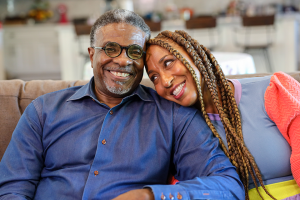


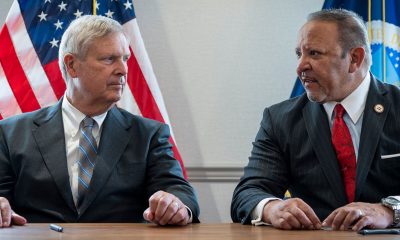

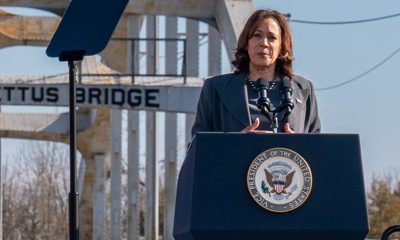

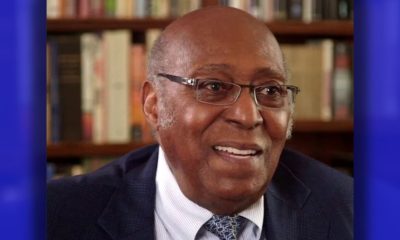

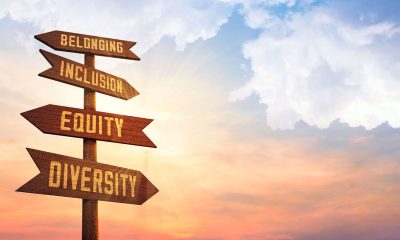

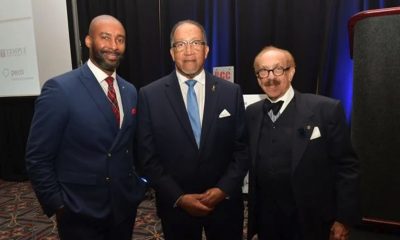












































Leave a Reply